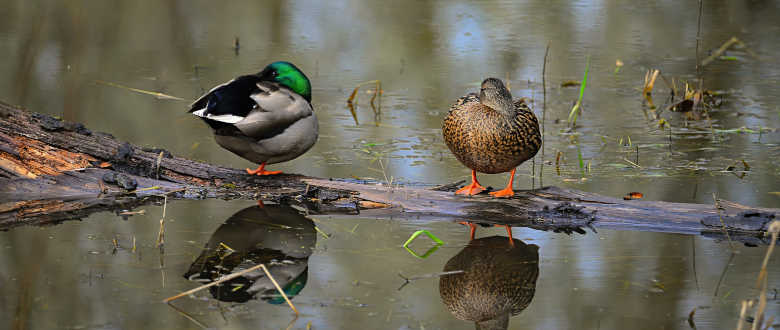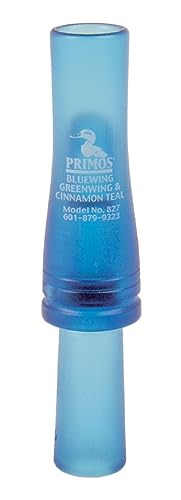↬ One question that many duck hunters have is whether or not mallards will land in teal decoys? It’s not uncommon for mallards and teal to comingle, but should you be relying on teal decoys to bring in mallards?
The answer is not as cut and dry as most would like, as it depends on a variety of factors, but mallards will land in teal decoys if placed in a way that mimics what real birds are doing. This means scouting mixed flocks of birds to find out how they are loafing. It also means being where the birds want to be, which is often more important than what type of decoys are being used.
In this article, we will explore the topic of mallards and teal decoys and provide some tips for using them effectively.
![]()

Will mallards land in teal decoys?
YES! Mallards will land in teal decoys, especially over deep open water where they are less likely to be surprised by unsuspecting predators or hunters. They are also more likely to key in on smaller teal decoys out in the open than they would be in dense vegetation or brush.
One key factor to consider when using teal decoys to attract mallards is how the decoy spread is situated. Specifically, it’s important to mix in mallard decoys with your teal decoys. This will give the appearance of a mixed flock, which can be more attractive to mallards.
The key is to have a natural ratio of mallards to teal in the spread. This can vary depending on the location, but a good rule of thumb is to have about two mallard decoys for every one teal decoy.
Tips for Hunting Mallards with Teal Decoys
- Place decoys in open water areas that can be easily seen
- Scout to find out if teal are mixing with mallards
- Add 6-12 mallard decoys to the teal spread
- Group mallard and teal decoys together by species
- Don’t rely on teal spreads for mallards later in the season
- Most importantly, be where the birds want to be
Related Products
Can you mix mallard and teal decoys?
Yes, it’s perfectly normal to mix mallard and teal decoys early in the hunting season. Teal are the first migrators triggered by the changing photoperiod, so having teal decoys and a handful of mallard decoys as a mixed spread is a great early season tactic.
Another important factor to consider is the placement of the decoys with mixed spreads. Mallards are attracted to areas of open water and easy food sources. Therefore, it’s important to set up the decoys in a location where mallards are likely to be feeding or resting.
This might be near a food source such as a corn field or near open water in a marsh. Additionally, it’s important to position the decoys in a natural looking manner. This means that the decoys should be facing different directions and positioned at different distances from each other. Add motion decoys for added realism.
Mixed species duck decoy spreads
When it comes to the number of decoys used in a mix spread, more is not always better. A large spread of decoys can actually be intimidating to mallards and make them less likely to land. This is especially true in some areas early in the season when not many mallards are down yet.
A more effective approach is to use a smaller number of decoys, but to make sure they are placed in a natural and attractive manner. A good rule of thumb is to use around a dozen decoys. This will give the appearance of a small flock, which can be more inviting to mallards.
For larger teal spreads, placing a dozen mallard decoys will not affect how teal decoy, as they aren’t as cognizance as mallards regarding decoy characteristics. Placing a dozen mallard decoys in a group alongside a larger spread of teal decoys is a great way to coax in mallards early in the hunting season.

Issues to Avoid
When using teal decoys to attract mallards, it’s important to avoid certain issues. The first is never randomly mix mallard and teal decoys together. It’s not a natural situation and is clearly evident when scouting. While birds will group together, they are almost always with like species within that group. This could mean two mallards together or 10, but when placing decoys, always try to position your decoys with groupings in mind.
The second is avoid using decoys that are in poor condition. Decoys that are faded, full of holes, or otherwise damaged can be a major red flag to mallards. This includes cheap decoys that are not natural looking and may be too shiny or have unnatural colors. Rather than be in the mindset of creating the largest spread possible (coke bottles et.al.), focus on realism instead.
The third issue is to avoid using decoys for mallard hunting that are too small, like teal decoys. Mallards are used to seeing other mallards, so a spread of teal decoys that are too small may not be attractive to them or they might not see it at all. While a teal spread can decoy mallards, it shouldn’t be the first choice. Treat it as a bonus if a mallard does decoy to a teal spread.
![]()
Bottom Line: You can mix duck decoys
Whether or not mallards will land in teal decoys depends on several factors. By following the tips outlined in this article, such as mixing decoys, placing decoys in natural locations, and avoiding common issues, you can increase your chances of success.
If you want to give mallard decoys a try in your teal spread, the Flambeau Storm Front 2 decoys are an inexpensive way to add some realism should mallards happen to fly by.
Remember to always pay attention to the natural habitat, food sources and behavior of the mallards and adjust your decoy spread accordingly. Early season is the best time to decoy mallards to a teal spread, but it shouldn’t be relied on later in the season.
Was this helpful?
Search Chokes by Gauge
Latest Posts
- Best Waterfowl Choke Tubes for 2024, Expert Picks
- Choke Tube Diameter and Constriction Table
- 5 Easy Ways to Remove a Stuck Choke Tube
Last update on 2025-11-27 / Affiliate links / Product Images from Amazon Product Advertising API






